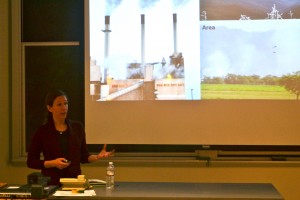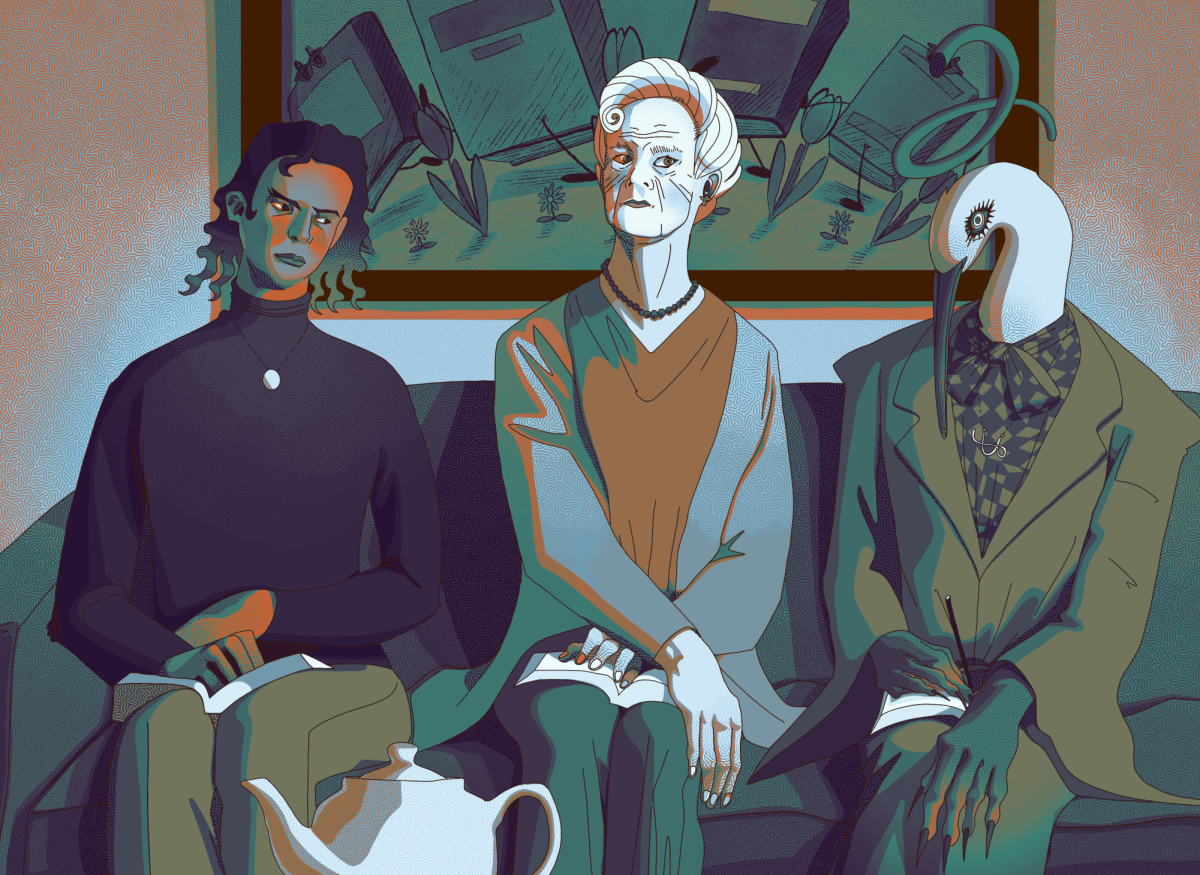
Grinnell alum Betsy Stone ‘05 gave the fourth and final talk in the Prairie Studies lecture series “Contaminants in our Environment” on Wednesday night. The series has celebrated the 50th anniversary of Rachel Carson’s seminal book Silent Spring and the re-birth of the environmental conservation movement in the 1960s and 70s. Stone, an Assistant Professor of chemistry at the University of Iowa, closed the environmentally-themed lecture series with her talk, “The Air we Breathe: Particle Air Pollution in Iowa.”
How did Grinnell help get you where you are today?
So much of my career has been built off of what I learned here at Grinnell, but growing up I was always pretty close to the environment. I spent a lot of time outdoors and I knew that I wanted to orient my career that way, but I wasn’t sure at all how I was going to do that until I came to Grinnell. I learned about different aspects of the environment and then found that chemistry really pointed me in the right path. Grinnell really opened up a lot of opportunities for me to explore my interests in the environment, chemistry and the natural surroundings here in Iowa.
What is the general explanation of your research and interests?
I was always really interested in how humans interact with the environment and part of that was driven by what I saw around me. I wanted to try and understand more about the impacts of the large-scale agriculture and industry in society. Although I had my eye set on doing water chemistry, I ended up doing air chemistry in grad school, and I wasn’t disappointed! There were so many really interesting, exciting problems in the field of atmospheric chemistry that needed to be addressed, in terms of climate and health effects of aerosols, that I immediately got into air quality research. My research very generally is about improving measurements to understand the composition of air pollution and using detailed chemical analysis to understand the sources of air pollution and how chemicals change or transform in the air.
You mentioned in your talk that you believe the “burden of communication” is now on scientists to make their findings publicly known and understood. How do you incorporate this into your own work?
I think the issue of climate change is an example of chemistry that is starting to be recognized and the basic science behind climate science is really pretty well understood now. Now we need to be teaching people a basic foundation of these scientific principles that they can then use to explore some of the different observations of things that are going on. I catch myself as a scientist slipping into my jargon… and I want to try and explain things in a layperson’s terms. There’s actually a lot of communication of scientific research on campus [at the University of Iowa] right now.
In fact, I recently made a YouTube video talking about my research, that I actually worked on with a Grinnellian, to try and get us [scientists] to take our language down a notch so we could explain things in general terms. That was a great exercise for me and what I am really passionate about is getting my students more involved with communicating their science. Because it’s amazing how much you learn when you’re teaching—I think if we can turn students into teachers about these basic issues and equip them with the scientific knowledge and maybe some nifty demos, we could make a bigger impact on people’s understanding of the science. I think it’s really an important thing—you won’t hear about [any of my research] unless I get out there and tell people about it. Communication has to be a bigger part of my career in order to make the bigger impact I want.
How do you make air pollution, a relatively abstract idea, something more understandable for people?
One way that I do that is with visual images. I use a lot of photography, and with air pollution there’s a lot of great aerial views and satellite images that show polluted air masses. I think that having something a little more substantial [allows] someone to look and see what an urban haze looks like, even though we don’t typically have them in Iowa, and to be able to understand what a polluted city looks like. People can then see that these issues are real. I always try to bring in the relevancy of atmospheric pollution in terms of climate effects or the health impacts to try and make that connection and to show people how this affects their life too.
Are we naïve in believing country air is fresher than city air?
I’m working on a part of the Keokuk county health study which is specifically aimed at getting a better understanding of rural air pollution, and Keokuk County is one of the most rural counties in Iowa. Using data on air pollution and toxic pollution in comparison to more urban areas in Iowa, you can start to see how the chemistry changes as a function of space. I speak to a lot of Iowans about my research and it’s fun to be able to talk to Iowans about air quality here because historically air pollution hasn’t been studied extensively in Iowa… [so] they find my research pretty interesting. There is an important role for natural sources of air pollution, like [what] I’m getting involved in [now] are biological particulate matters.
Do you hope to affect change in people’s attitudes when talking about air pollution? What are your goals?
So much of air pollution and legislation and change comes from regulation from the federal government that my goal is more to provide the scientific basis for informed decision-making at both the state and federal level. My research targets understanding the composition of particulate matter because that can help us understand where it’s coming from and, in the light of increasingly strict air pollution, there’s an increasing need to address those sources. So that’s a question I hope to be able to answer. The science is just the beginning. I think it can originate change—it starts with the communication and [although] I haven’t really gotten beyond that point, I’d be really interested to get involved with policymakers to try and address air quality issues.
— Compiled by Meg Schmitt, schmittm@grinnell.edu



























































